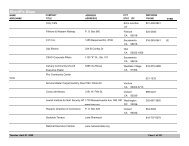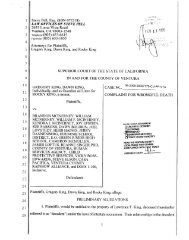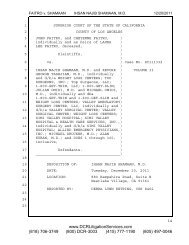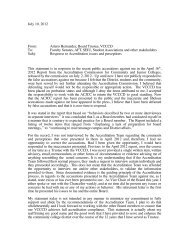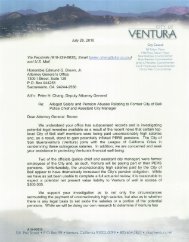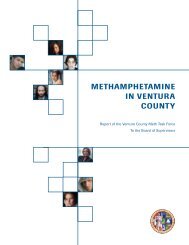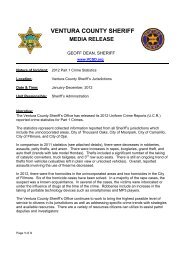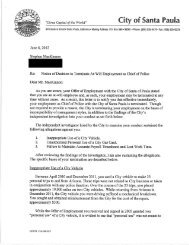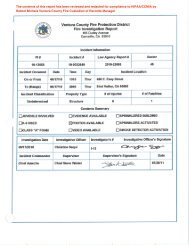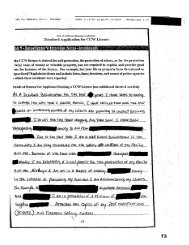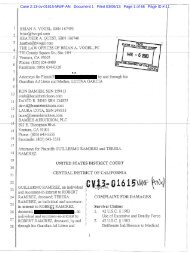Metrolink peer review report - Ventura County Star
Metrolink peer review report - Ventura County Star
Metrolink peer review report - Ventura County Star
Create successful ePaper yourself
Turn your PDF publications into a flip-book with our unique Google optimized e-Paper software.
METROLINK COMMUTER RAIL SAFETY PEER REVIEW PANEL<br />
Final Report – January 5, 2009<br />
APPENDIX D: DEFINITION OF TERMS<br />
Appendix D: Definition of Terms<br />
Ad Hoc Subcommittee A subcommittee created by the SCRRA Board of Directors to conduct the <strong>Metrolink</strong><br />
Safety Peer Review in response to the September 12, 2008 Chatsworth incident.<br />
American Public<br />
Transportation<br />
Association (APTA)<br />
Amtrak’s Event Review<br />
Program<br />
Automatic Train Stop<br />
(ATS)<br />
APTA is a nonprofit international association of more than 1,500 member<br />
organizations including public transportation systems; planning, design,<br />
construction and finance firms; product and service providers; academic institutions;<br />
and state associations and departments of transportation. APTA is a data<br />
collection/dissemination resource, a Standards Development Organization and an<br />
education and advocacy organization for the public transportation industry. APTA<br />
members serve more than 90 percent of persons using public transportation in the<br />
United States and Canada.<br />
A program that Amtrak has instituted to do a <strong>review</strong> of an event that includes all<br />
aspects of the event. This program also includes follow-up on changes that are<br />
necessitated by the event.<br />
Technology that works by making an electrical interconnection between the signal<br />
system governing train movement, a train occupancy detector and the train’s air<br />
brakes to stop the train in the instance of a missed signal.<br />
Banner Testing The process by which a qualified supervisor sets up a main line or yard test to<br />
determine engineer compliance with stop signal and restricted speed. Set up may<br />
require shunting by signal department employees and coordination with the OCC.<br />
Behavior Based Safety<br />
(BBS) Training<br />
Although similar to Efficiency Testing 9 , in which employees are observed for<br />
adherence to operating rules and regulations, one of the differences in BBS training is<br />
the focus on changing any at risk safety behavior with positive feedback behavioral<br />
techniques.<br />
Big Four Contractors The collective term referring to SCRRA’s major operating contractors including;<br />
Maintenance of Way, Signal and Communications, Vehicle Maintenance, and<br />
Transportation.<br />
California Public<br />
Utilities Commission<br />
(CPUC)<br />
Centralized Traffic<br />
Control (CTC)<br />
The CPUC is the government agency within the state of California that regulates the<br />
operating railroads and transit agencies. The CPUC functions as safety oversight for<br />
grade crossings, grade separations, operating safety plans and other safety issues<br />
related to railroad/transit operations.<br />
The railroad signaling system consisting of centralized train dispatchers that control<br />
the switches in the operating railroad territory and the signals that railroad engineers<br />
must obey for the safe operations of the railroad.<br />
9 Efficiency Testing is mandated by Federal Railroad Administration (FRA) law 49 CFR 217. Testing is conducted on safety critical<br />
positions to confirm compliance to operating rules and federal regulations<br />
77



